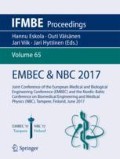Abstract
Electrospinning is a technique for creating continuous nanofibrous networks that can architecturally be similar to the structure of extracellular matrix (ECM). In this work, a kind of PLGA/silk fibroin composite electrospinning nanofibrous scaffolds is proposed for the growth of skin cells in combination with the good mechanical properties with not easy to deformation of silk fibroin and the self-floating of PLGA. The SEM experiment of the silk fibroin/PLGA composite nanofibers indicated that the prepared nanofibers are smooth, uniform in size and have good porosity. The floating experiment is shown that this scaffold is able to suspend in water and is also able to suspend in cell culture medium, hence, the skin cells seeded on the scaffold are exposed to air as required in skin tissue engineering. The wrinkled contrast experiment and the degradation experiment are verified the usefulness of this scaffold.
Preview
Unable to display preview. Download preview PDF.
References
1. Ru CH, Wang FL, Pang M et al. (2015) Suspended, Shrinkage-Free, Electrospun PLGA Nanofibrous Scaffold for Skin Tissue Engineering et al. ACS Appl. Mater. Interfaces 2015, 7: 10872–10877.
2. Mansbridge, J. (2008) Skin Tissue Engineering. J. Biomater. Sci., Polym. Ed. 2008, 19:955–968.
3. Marino D, Reichmann E, Meuli M. (2014) Skingineering. Eur. J. Pediatr. Surg. 2014, 24:205–213.
4. Chandrasekaran AR; Venugopal J, Sundarrajan S et al. (2011) Fabrication of a Nanofibrous Scaffold with Improved Bioactivity for Culture of Human Dermal Fibroblasts for Skin Regeneration. Biomed. Mater. 2011, 6: 015001.
5. Hemmerling J, Wegner KJ, Stebut E et al. (2011) Human Epidermal Langerhans Cells Replenish Skin Xenografts and are Depleted by Alloreactive T Cells in Vivo. J. Immunol. 2011, 187: 1142–1149.
6. Cirodde A, Leclerc T, Jault P et al. (2011) Cultured Epithelial Autografts in Massive Burns: A Single Center Retrospective Study with 63 Patients. Burns 2011, 37: 964–972.
7. Catalano E, Cochis A, Varoni E et al. (2013) Tissue Engineered Skin Substitutes: An Overview. J. Artif. Organs 2013, 16:397–403.
8. Chen H, Huang J, Yu J et al. (2011) Electrospun Chitosangraft-poly(ε-caprolactone)/Poly(ε-caprolactone) Cationic Nanofibrous Mats as Potential Scaffolds for Skin Tissue Engineering. Int. J. Biol. Macromol. 2011, 48:13–19.
9. Yang S, Leong KF, Du Z et al. (2001) Design of Scaffolds for Use in Tissue Engineering. Part I. Traditional factors. Tissue Eng. 2001, 7: 679–689.
10. Weber B, Zeisberger SM, Hoerstrup SP. (2011) Prenatally Harvested Cells for Cardiovascular Tissue Engineering: Fabrication of Autologous Implants Prior to Birth. Placenta 2011, 32: S316–S319.
11. Biedermann T, Boettcher HS, Reichmann E. (2013) Tissue Engineering of Skin for Wound Coverage. Eur. J. Pediatr. Surg. 2013, 23:375–382.
12. Jana S, Tefft BJ, Spoon DB et al. (2014) Scaffolds for Tissue Engineering of Cardiac Valves. Acta Biomater. 2014, 10: 2877–2893.
13. Zhu X, Cui W, Li X et al. (2008) Electrospun Fibrous Mats with High Porosity as Potential Scaffolds for Skin Tissue Engineering. Biomacromolecules 2008, 9: 1795–1801.
14. Ellison CJ, Phatak A, Giles DW et al. (2007) Melt Blown Nanofibers: Fiber Diameter Distributions and Onset of Fiber Breakup. Polymer 2007, 48:3306–3316.
15. Torbati AH, Mather RT, Reeder JE et al. (2014) Fabrication of A Light-Emitting Shape Memory Polymeric Web Containing Indocyanine Green. J. Biomed. Mater. Res., Part B 2014, 102: 1236–1243.
16. Liu X, Ma PX. (2009) Phase Separation, Pore Structure, and Properties of Nanofibrous Gelatin Scaffolds. Biomaterials 2009, 30: 4094–4103.
17. Gao Y, Kuang Y, Guo ZF et al. (2009) Enzyme- Instructed Molecular Self-Sssembly Confers Nanofibers and A Supramolecular Hydrogel of Taxol Derivative. J. Am. Chem. Soc. 2009, 131:13576–13577.
18. Wang FL, Zhang WB, Ru CH et al. (2014) Electrospinning System with Tunable Collector for Fabricating Three-dimensional Nanofibrous Structures. Micro & Nano Letters, 2014, Vol. 9, Iss. 1, pp. 24–27
Author information
Authors and Affiliations
Corresponding author
Editor information
Editors and Affiliations
Rights and permissions
Copyright information
© 2018 Springer Nature Singapore Pte Ltd.
About this paper
Cite this paper
Zhu, C., Wang, C., Chen, R., Ru, C. (2018). A Novel Composite and Suspended Nanofibrous Scaffold for Skin Tissue Engineering. In: Eskola, H., Väisänen, O., Viik, J., Hyttinen, J. (eds) EMBEC & NBC 2017. EMBEC NBC 2017 2017. IFMBE Proceedings, vol 65. Springer, Singapore. https://doi.org/10.1007/978-981-10-5122-7_1
Download citation
DOI: https://doi.org/10.1007/978-981-10-5122-7_1
Published:
Publisher Name: Springer, Singapore
Print ISBN: 978-981-10-5121-0
Online ISBN: 978-981-10-5122-7
eBook Packages: EngineeringEngineering (R0)

